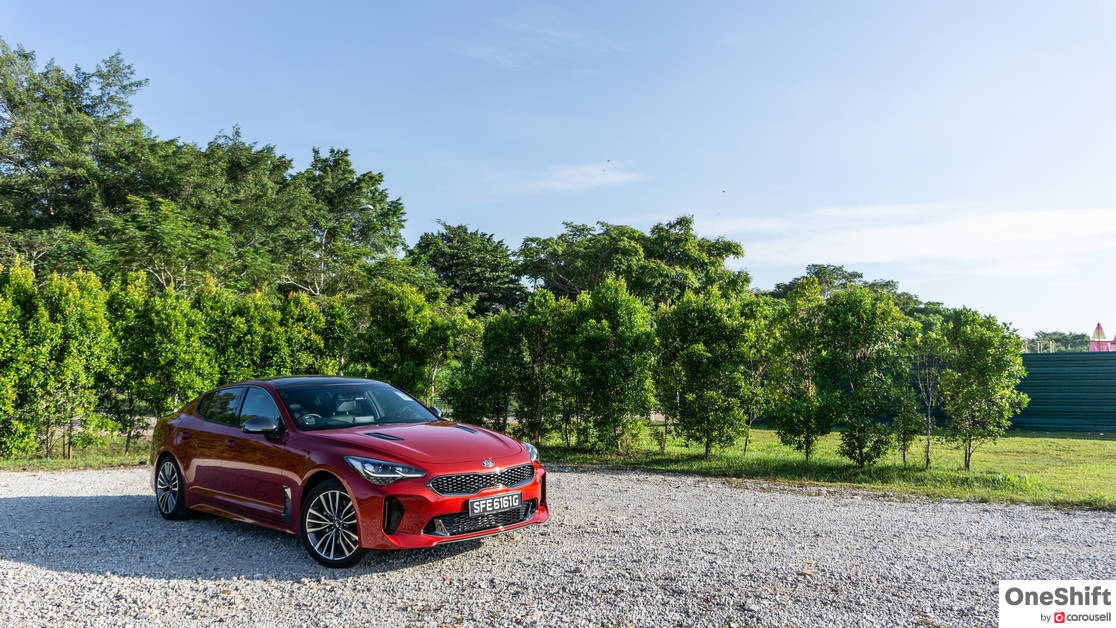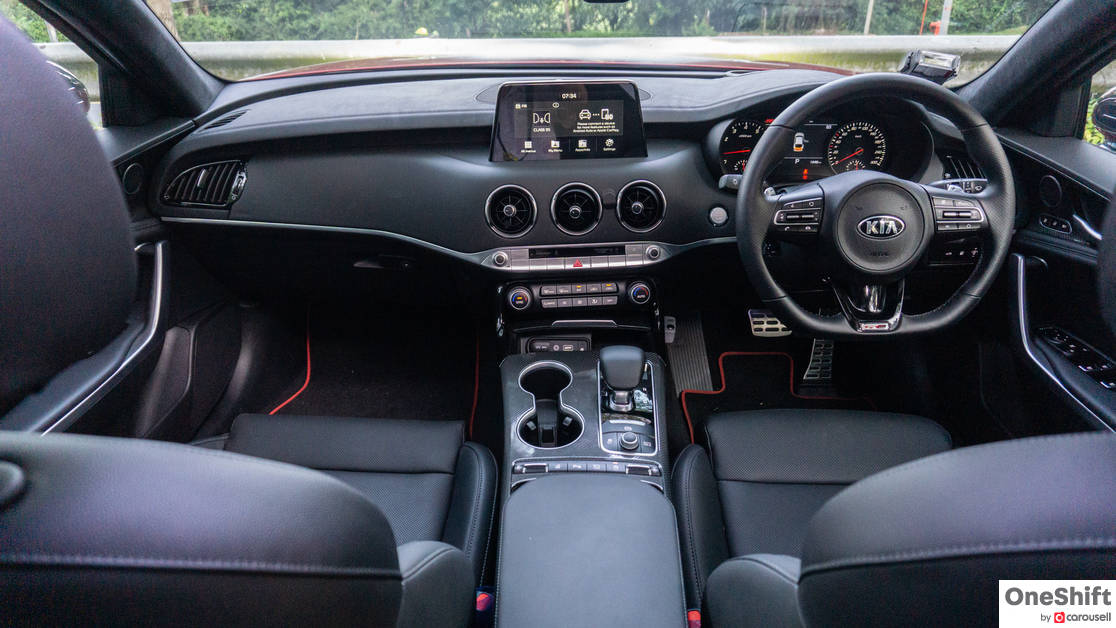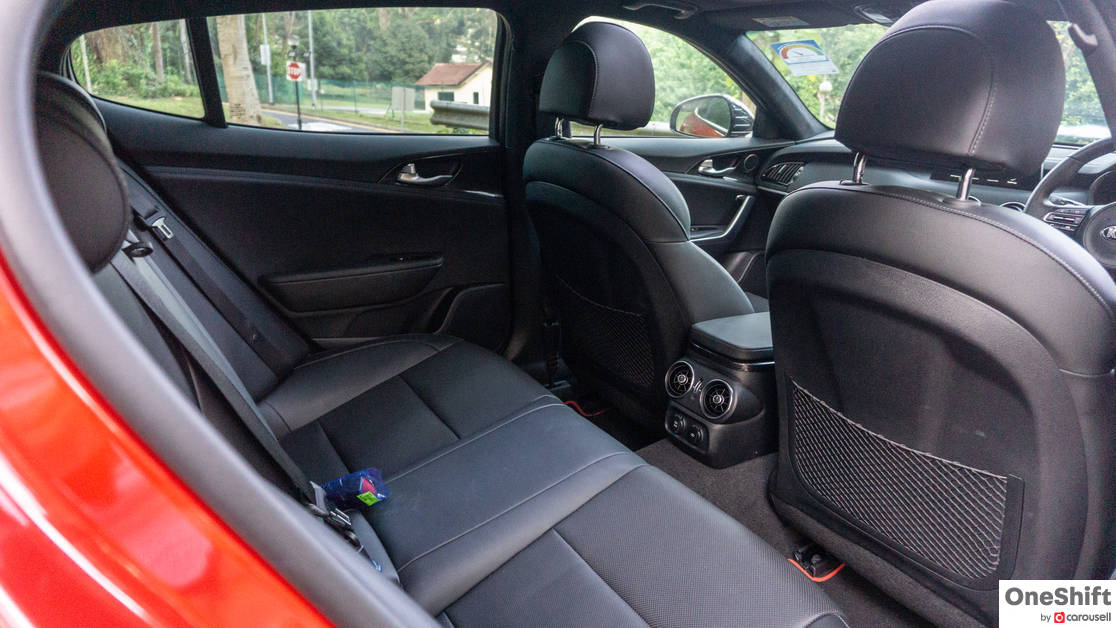A Lighter Sting
We try the tamer Stinger with the 2L engine which most people would buy - is it still the bargain sports sedan of the moment?


The Kia Stinger is a result of years of planning by Kia to make a name for itself in the performance car world. With hallowed names like Peter Schreyer (designer of the original - and iconic - Audi TT) and Albert Biermann (ex BMW M chief responsible for the E46 M3 and E39 M5) backing the new flagship Kia, expectations reign high for the new entrant in the hotly contested performance luxury saloon segment.

By and large, it has succeeded. In our earlier review of the 3.3-litre variant, we praised the car for its torquey engine and ride comfort, although understandably there were some teething quality pitfalls at launch. After all, this is the very first generation Stinger; Kia has never done a rear-wheel drive sedan before, much less something at this price point.

We revisit the Stinger again, now getting behind the wheel of the more accessible and tax-friendly GT Line with a 2-litre turbocharged engine. Although the GT gets all of the attention, it’s also notable that the GT Line presents great value for money as well. Measuring how much dollars you spend per horsepower (taking list prices into account), the GT Line costs you roughly $670 per HP (admittedly, the GT is even lower at $557 per HP). However, if you pit the GT Line against its closest competitors, the Alfa Romeo Giulia Veloce will cost you $757 per HP, while the slightly quicker BMW 330i will cost $940 per HP.

With the GT Line forming the bulk of Stinger sales in Singapore (3 in 4 when we last checked), we were interested to see if the cheaper variant can hold its own as well. From the outside, the car is almost indistinguishable from the GT. It still has the quad exhausts, LED lights front/ rear and even the fake air vents on the bonnet. The only giveaway are the 18-inch alloys which look tamer than the 19-inchers on the GT. Otherwise, it looks every bit as menacing and alluring.

The lines have the freedom to stretch across a long wheelbase, so the car gives a convincing impression of a four-door coupe. It’s sleek and low-slung with virtually no unsightly angles. The front end is chiselled with the trademark Kia ‘Tiger Nose’, the bonnet long and the rear is finished with a unique light design that stretches towards the C-pillar. A benefit of the coupe-like body is the rear hatch opening, which makes the car far more practical for loading bulky items than a saloon. Overall, it’s an arresting look yet quite distinctly Kia, one that has turned a few heads during the test drive. Currently, there’s a 20th anniversary edition of the Stinger for sale with an even more aggressive bodykit.
The moment you open the doors, you realise this is not like any other Kia. They are heavy and close with a Teutonic thunk. Once in, you are greeted with some familiar elements from other luxury cars - the turbine air vents (Mercedes) and gear lever (Audi), for example - but it comes together distinctively enough without feeling like a copycat.

The instrument gauges are backlit in white, which are highly legible. In between them reside a high-resolution trip computer which, like the central screen, is logically laid out with clear and easy-to-understand menus not dissimilar to what you find in other Kias (no bad thing). The leather-wrapped steering wheel feels perfectly sized, is great to hold and mounted on it are paddle shifters. First thing I noticed is just how spot on the seating position is. It was as if somebody transplanted the placements of the pedals, seats and steering wheel from a BMW M car.

The seats themselves offer ventilation, one of the many little luxuries that will delight at this price point including a heads-up display, suede roof lining and wireless phone charging. Something that irked me is the faux carbon fibre look trim, which just appears tacky. I wouldn’t say the overall ambience is particularly luxurious, but considering its price point it meets expectations.

On top of a large rear hatch opening, the rear seats can be folded down easily too - offering a large loading space that a conventional saloon simply can’t match. This is a good argument for convincing the better half to buy a Stinger.

What maybe is less family-friendly is the sloping roofline, which makes getting to the rear seats a little inconvenient especially when loading a baby seat. The rear legroom is also average at best considering the length of the car (lack of toe room is partially to blame), and with a huge transmission tunnel for the rear-wheel drive car, the middle second row passenger will be fighting for both legroom and also headroom. If there’s any consolation, at least said passenger can get his/her phone charged with a USB port conveniently located at the back, as well as make adjustments for the aircon temperature.
With a low-slung seating position and a broad bonnet, it certainly puts the driver in the mood for spirited driving. Kia markets the car as a Gran Turismo - grand tourer - and this is important when framing the car’s capabilities. It can drive sportily and offer involvement, but it is not an all-out sports car. Thank God for that, because it can be tiresome driving a harsh-riding, uncouth four door all day, every day.

Kia has cleverly engineered the car to answer all the questions a grand tourer needs to deliver. It is simply rock steady at speed - I have little doubt this car can sit on the Autobahn cruising above 200km/h very comfortably, something that can’t be said for some of the Stinger’s smaller rivals with a shorter wheelbase and less long-legged capabilities. It virtually steamrolls the imperfections on the road, no doubt aided also by its not insubstantial kerb weight which in this case actually helps its cause.

Despite the lack of several technologies that come standard in the GT, such as adaptive suspension, a mechanical limited slip differential (LSD) and variable steering, the passive dampers for example are very well-judged. Especially where Singapore speed limits are observed, I doubt you will have much to complain about the ride. The lack of a LSD is also hardly noticeable if you’re not bringing the car to its limits and attempting to oversteer it.

If anything, the fact that the car feels so polished even without these aids show that the basic underpinnings are just excellent. It already feels mature, a car that has gone through several generations, not merely in its first.

If you drive it hard, that’s where things start to unravel a bit. The engine, while giving very good low-end torque that will feel more than adequate for most situations, starts to struggle a bit hauling all that weight. Its top end doesn’t deliver the same rush as the lower rpms, so it has to work laboriously - and it doesn’t sound fantastic while at it either, whether the enhancement via the speakers are on or off. For the record, we prefer them off.

The gearbox doesn’t help either, being fairly indecisive on hard throttle inputs. There lacks a final polish to its programming, which is further exacerbated by the fact that there is no way to lock the gearbox in manual override. It will always revert back to Auto after a few seconds, so after a few attempts you’d not want to wring the car out to its redline at every turn.

But that’s just as well. It’s not that sort of car. Again, for a grand tourer, the GT Line is very accomplished, delivering a comfortable, secure and fun drive that you just want to get more and more of, even during mundane urban situations. Eco mode will even deliver decent fuel economy: we averaged 12L/100km in mixed driving, but managed 7L/100km on a relaxed highway cruise.
The Stinger needs to be enjoyed in its full-fat version, the GT. There, we had to say it. It simply doesn’t feel as special or as complete without a surprisingly punchy V6 under its bonnet that will terrorise Audi S and BMW MPA cars, or more.

But if you, like me, can hardly afford the $200k or so price of entry for the GT, the next best thing has to be the GT Line. Things are a little trickier at the GT Line’s price point, as four cylinder options are a dime a dozen. However, if you’re narrowing down choices to only rear wheel drive then the Stinger manages to give back to you more than any other car at its price. It isn’t for the image conscious, but enthusiasts will find lots to love.

Its competitors are simply not as fast, do not possess the same breadth of abilities, or aren’t able to give you this performance with a industry-leading 5 year unlimited mileage warranty / 10 year engine warranty. I think it’s worth giving this car a shot if your priority is an engaging drive, but if you can, wait for a used GT or play your cards right in the depressed financial markets now to make the extra dough.
Credits: James Wong







- Convenient and Hassle-Free
- Consumer Protection
Transparent Process
With No Obligation


Get the Best Price for your used car
from 500+ dealers in 24 hours








